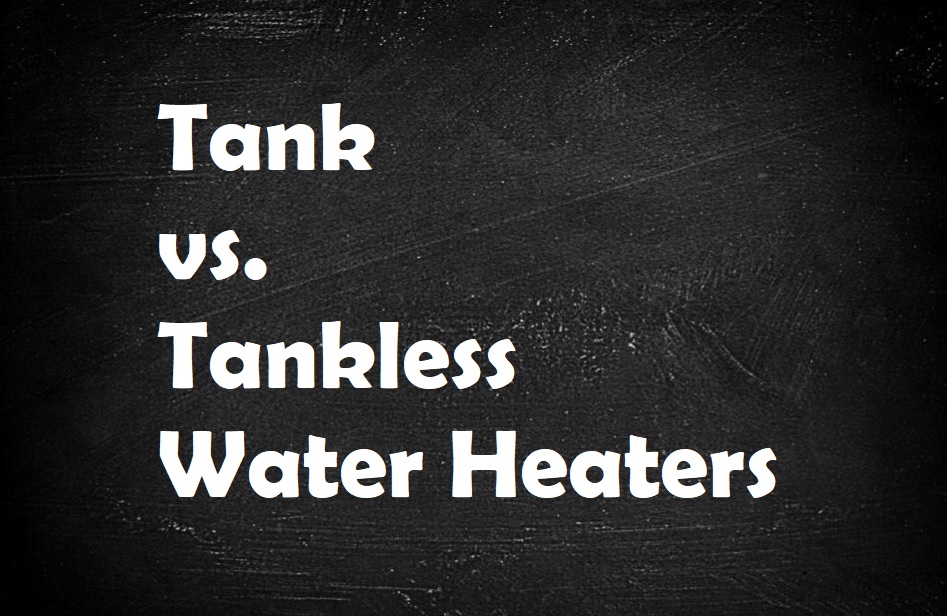We rely on a steady supply of hot water for showering, bathing, cleaning, and more. When the hot water is not available, it causes a number of problems, and it’s a priority to get the problem fixed quickly. So, it should come as no surprise that a water heater is one of the most important and hardest working appliances in our homes. When you choose a new water heater, the first choice you need to make is whether to choose a tank or tankless unit. In this article, we will take a closer look at both to help you make a more informed purchasing decision.
Two Different Approaches
It’s important to state upfront that there is no one size fits all solution when it comes to heating water. In fact, both tank and tankless water heaters have their own set of pros and cons that you need to consider before making a final decision. Although both types of water heaters perform the same function, they work in very different ways.
A Tank Water Heater
Many homes have a tank water heater. This is often referred to as a “traditional water heater” because this tried and tested design has been in continuous use for decades. This unit has a tank where the heated water is stored until you’re ready to use it. A tank water heater can use gas or electricity, which will affect how they work. An electrically powered water heater is typically more efficient, but it can be costly to use. The gas powered tank water heater usually has a higher upfront cost, but it’s less expensive to run. In most cases, the choice between an electrically or gas powered water heater comes down to the type of power in your home and the available budget.
The tank water heater only refills the tank when you have used all the warmed water. The demand for warm water is triggered when someone opens a tap or operates a plumbing fixture. When the tank is empty, it is refilled via a dip tube which is a long tube that covers the entire length of the water tank. The principle is simple, as the heat rises, the water is drawn into the tank from a cooler source of water. The cool water is at the bottom of the tank water heater, where the burners that heat the water are located. As the cool water is heated, it rises up to the top of the tank, where it will remain until there is a demand for the heated water.
There are a few pros and cons to consider when you’re thinking about a traditional tank style water heater for your home. This type of water heater is designed to store gallons of hot water at a time, and when you turn on a tap, you’re going to get sufficient warm water. If you live in a smaller household, this is a good option because you’re not likely to run out of hot water. Another good thing about this style of water heater is that the maintenance and upkeep costs are pretty low. When you need to replace a tank water heater, you will notice that they are very affordable, but they don’t tend to last as long as a tankless alternative. It’s likely that you will need to replace your tank water heater every 10-15 years and regularly maintained units would be at the upper end of that range. Over the entire lifespan of a tank water heater, the operating costs will be higher.
A Tankless Water Heater
As the name suggests, a tankless water heater doesn’t have a water storage tank. The unit only operates when there is a demand for hot water, and water is warmed as it passes through the system. When someone in your home turns on a tap for warm water, it will be brought in from the cool water outdoors and passed through the water heater. This type of water heater can be powered with electricity or gas just like a tank version.
Because you don’t need a tank, you can heat up your water without a supply of stored water in place. The cool water is heated as it’s drawn into the system, and you can have as much hot water as you like. There is no finite limit, you don’t need to wait for a water heater tank to refill, and for many people, this is the main attraction. Another key advantage of a tankless water heater is that it takes up less room than a traditional system. Even a smaller water storage tank can take up a lot of space, and in some modern homes, it can be hard to find enough space to house it. Remember that you will need access to the storage tank when maintenance is required, or you have to flush the system.
If you have a larger family, you need to seriously consider a tankless water heater installation. Anyone with at least a few kids will understand that you can go through an entire tank of hot water in next to no time. Someone always gets left with no hot water, and a cold shower is no way to start a day on the right foot. But, the main drawback of a tankless unit has to be the initial purchasing cost which is higher than a traditional model. If you want a larger unit that can provide a lot of hot water on-demand quickly, it can be an expensive investment. There are other challenges to overcome, the plumber may need to reroute a gas line to the appliance, and extra installation work bumps up the bill. That being said, a gas powered tankless water heater is the best choice if you have the budget because the operating costs will be much lower.
If you need a new water heater for your home, contact your local certified plumber for expert help and advice today.





